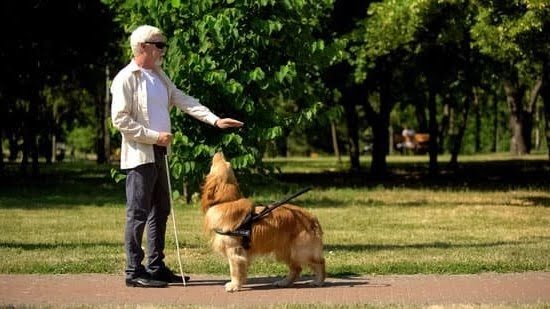Are you interested in learning how to start training dogs? Training your furry friend is not only beneficial for their behavior, but it also strengthens the bond between you and your pet.
In this comprehensive guide, we will cover everything from understanding the importance of dog training to dealing with common training challenges. Whether you’re a first-time dog owner or looking to enhance your current dog training skills, this article will provide you with valuable insights on effective dog training techniques.
Dog training is essential for a well-behaved and obedient pet. It not only ensures their safety and the safety of others but also contributes to their overall well-being. Properly trained dogs are happier, healthier, and more confident, leading to a harmonious relationship with their owners. Understanding the importance of dog training is the first step towards creating a positive and enriching experience for both you and your canine companion.
When it comes to starting your dog’s training journey, finding the right method is crucial. Each dog is unique and may respond differently to various training approaches. From positive reinforcement to punishment-based methods, choosing the right technique plays a significant role in shaping your dog’s behavior.
Additionally, understanding how different breeds may require distinct approaches is essential for successful training. This article will explore various methods and offer tips on finding the most suitable approach for your dog’s individual needs.
Finding the Right Training Method for Your Dog
When it comes to training your dog, finding the right training method is crucial for success. Every dog is unique, and what works for one may not work for another. Understanding different training methods can help you find the best approach for your furry friend.
Understanding Different Training Methods
There are various training methods available, including positive reinforcement, clicker training, dominance-based training, and electronic collar training. Positive reinforcement focuses on rewarding your dog for good behavior, while clicker training involves using a clicking sound followed by a treat to mark the desired behavior.
Dominance-based training emphasizes establishing yourself as the alpha in the relationship with your dog, and electronic collar training uses remote-controlled collars to deliver a static shock or vibration as a form of correction. It’s essential to research each method thoroughly and consider your dog’s personality and temperament when deciding which one to use.
Customizing Your Approach
No single method works perfectly for every dog, so it’s important to customize your approach based on your dog’s individual needs. Some dogs respond better to positive reinforcement, while others may require a firmer hand. Take the time to observe your dog’s behavior and reactions to different training techniques before settling on a specific method.
Seeking Professional Guidance
If you’re unsure where to start with finding the right training method for your dog, don’t hesitate to seek professional help. A certified dog trainer can assess your dog’s behavior and recommend the most effective approach for their unique needs. Additionally, they can provide you with personalized guidance on how to start training dogs and support you throughout the process.
Overall, finding the right training method for your dog requires patience, observation, and flexibility. By understanding different techniques and customizing your approach based on your dog’s needs, you can set them up for success in their training journey.
Choosing the Right Equipment for Dog Training
When it comes to training your dog, choosing the right equipment is essential to ensure a successful and positive learning experience for both you and your furry friend. From collars to leashes to treats, having the appropriate tools can make all the difference in how effective your training sessions are. Here are some key considerations when it comes to selecting the right equipment for dog training.
Collars and Leashes
One of the most basic and important pieces of equipment for dog training is a collar and leash. When it comes to choosing a collar, there are various types available, such as flat collars, martingale collars, and head halters.
It’s important to select a collar that fits comfortably around your dog’s neck without being too tight or too loose. Additionally, leashes come in different materials and lengths, so consider what will work best for your dog based on their size and behavior.
Treats and Rewards
Using treats as positive reinforcement is a common method for training dogs. When choosing treats for training, opt for small, soft, and flavorful ones that your dog can easily consume during quick training sessions. It’s important to find treats that your dog finds highly motivating but are also not harmful to their health.
Training Aids
There are various training aids available in the market, such as clickers, whistle commands, or scent markers. These tools can be helpful in reinforcing desired behaviors during training sessions. However, it’s essential to understand how each aid works before incorporating them into your training routine.
By carefully selecting the right equipment for dog training based on your pet’s individual needs and behavior patterns, you can set yourself up for success in teaching them new skills and behaviors. Remember that every dog is unique, so take the time to observe how they respond to different equipment options and adjust accordingly as you embark on this journey of teaching them valuable lessons.
Basic Training Commands and Techniques
When it comes to training your dog, basic training commands and techniques are essential for building a strong foundation. Here are some key commands and techniques to get you started on the right track:
- Sit: Teaching your dog to sit is one of the most basic and important commands. To do this, hold a treat close to your dog’s nose and then slowly move your hand up, allowing their head to follow the treat. As their head goes up, their bottom will lower. Once they are in the sitting position, say “sit” and give them the treat.
- Stay: The “stay” command is crucial for keeping your dog safe in various situations. Start by asking your dog to sit, then open the palm of your hand in front of you and say “stay.” Step back a few steps and if they stay, reward them with a treat.
- Come: This command is important for recalling your dog in any situation. Start with a long leash attached to your dog’s collar, squat down, open your arms, and encourage them to come to you by saying their name followed by “come.” When they reach you, reward them with a treat.
These basic commands form the basis of effective communication between you and your dog. Consistency is key when teaching these commands, so be patient and practice regularly.
In addition to mastering basic commands, it’s important to use positive reinforcement methods during training sessions. This means rewarding desirable behavior with treats or praise, rather than using punishment-based techniques. By creating a positive association with learning and obeying these commands, you’ll build trust with your dog and set the stage for more advanced training in the future.
Remember that every dog is unique, so it’s crucial to tailor your training approach based on their individual needs and personality. By understanding how different breeds respond to training and adjusting your methods accordingly, you can set yourself up for success in teaching them new skills. Whether you have a small or large breed or one with specific temperament traits, taking these differences into account will improve the effectiveness of your training efforts.
By mastering these basic training commands and techniques using positive reinforcement methods tailored to your dog’s specific needs, you’ll be well on your way to establishing a strong bond with man’s best friend while shaping their behavior in a positive way – all while ensuring both their safety and enjoyment.
Creating a Consistent Training Schedule
Consistency is key when it comes to training dogs. A regular and consistent training schedule can greatly improve the effectiveness of your dog’s training. It helps them develop good habits, understand commands more quickly, and overall makes the training process smoother. So, how do you create a consistent training schedule for your furry friend?
Firstly, set aside specific times each day for training sessions. Dogs thrive on routine, so having a set schedule will make it easier for them to understand when it’s time to focus and learn. Whether it’s a morning session before breakfast or an evening session after dinner, find what works best for both you and your dog.
Another important aspect of creating a consistent training schedule is to keep the sessions short and frequent. Dogs have shorter attention spans, so multiple short training sessions throughout the day are more effective than one long session. Short but frequent sessions also prevent your dog from getting bored or tired during training.
Lastly, be patient and persistent with your schedule. Consistency doesn’t happen overnight and it may take some time for both you and your dog to adjust to the new routine. But with patience and dedication, you’ll soon see improvements in your dog’s behavior and responsiveness to commands.
| Training Schedule | Importance |
|---|---|
| Set specific times each day for training sessions | Helps dogs understand when to focus and learn |
| Keep the sessions short and frequent | Makes training more effective prevents boredom or fatigue |
| Be patient and persistent with the schedule | Consistency takes time but leads to improved behavior |
Positive Reinforcement vs Punishment-Based Training
When it comes to training your dog, one of the most important decisions to make is whether to use positive reinforcement or punishment-based training. Positive reinforcement involves rewarding your dog for good behavior, while punishment-based training focuses on correcting undesired behaviors through aversive methods.
Positive reinforcement has been shown to be more effective in teaching new behaviors and maintaining good behavior in dogs. This method involves using rewards such as treats, praise, or toys to encourage the dog to repeat the desired behavior. It creates a positive association with the behavior and helps build a strong bond between you and your pet.
On the other hand, punishment-based training uses aversive methods such as leash corrections, yelling, or physical punishment to deter undesired behaviors. While this method may produce immediate results, it can also lead to fear, anxiety, and aggression in dogs. It can also damage the trust between you and your pet.
It is essential to consider the long-term effects of the training method you choose for your dog. Positive reinforcement not only leads to better obedience but also promotes a healthy and happy relationship with your furry friend.
| Training Method | Effectiveness |
|---|---|
| Positive Reinforcement | Effective in teaching new behaviors and promoting good behavior; builds trust and strengthens bond with the dog. |
| Punishment-Based Training | May produce immediate results but can lead to fear, anxiety, aggression, and damage trust between owner and dog. |
Dealing With Common Training Challenges
Training a dog can be a rewarding experience, but it also comes with its fair share of challenges. Many dog owners may encounter common obstacles when trying to teach their furry friend new behaviors or commands. Here are some common training challenges and how to address them:
1. Potty Training: One of the most common challenges for dog owners is potty training. It is important to remember that accidents will happen, especially with young puppies. To address this challenge, establish a consistent routine for bathroom breaks, reward your dog for going outside, and clean up accidents without scolding your pet.
2. Pulling on the Leash: Another common issue during walks is a dog pulling on the leash. To tackle this challenge, consider using positive reinforcement techniques such as treats and praise when your dog walks calmly by your side. Additionally, using a front-clip harness can help discourage pulling.
3. Excessive Barking: Excessive barking can be frustrating for both the owner and those around them. To address this challenge, identify the root cause of the barking (e.g. boredom, attention-seeking behavior) and use positive reinforcement to encourage quiet behavior.
By understanding these common training challenges and implementing effective strategies to address them, you can set yourself and your dog up for successful training sessions. Remember that patience and consistency are key when it comes to overcoming these obstacles in your journey to train your beloved pet.
Tips for Training Different Breeds of Dogs
When it comes to training different breeds of dogs, it’s important to understand that each breed has its own unique characteristics and tendencies. What works for one breed may not necessarily work for another, so it’s essential to tailor your training approach based on the specific traits of your dog’s breed.
One important tip for training different breeds of dogs is to research and understand the typical behavior and temperament of your dog’s breed. For example, herding breeds such as Border Collies may require more mental stimulation and challenging tasks during training, while sporting breeds like Retrievers may respond well to positive reinforcement and rewards-based training methods. By understanding the natural tendencies of your dog’s breed, you can adjust your training techniques accordingly.
In addition, it’s also crucial to consider the energy level and exercise needs of different dog breeds when planning their training regimen. High-energy breeds such as Huskies or Dalmatians may require more vigorous physical exercise before they can fully engage in training sessions. Understanding these specific needs will allow you to create a more effective and enjoyable training experience for both you and your furry companion.
Furthermore, seeking guidance from experienced trainers or breed-specific experts can be invaluable when it comes to training different breeds of dogs. These professionals can provide personalized advice on how to best approach training based on the unique characteristics of your dog’s breed. By taking into account these tips and seeking expert guidance, you can develop a customized training plan that caters to the individual needs of your dog’s breed.
Seeking Professional Help for Advanced Training Needs
In conclusion, starting to train your dog is a rewarding and beneficial endeavor that can strengthen the bond between you and your furry companion. Understanding the importance of dog training lays the foundation for a well-behaved and obedient dog, making it essential to invest time and effort into this process.
Finding the right training method for your dog is crucial, as different dogs respond better to varying techniques, so it’s important to assess what works best for your pet.
Choosing the right equipment for dog training is also important, as it ensures both safety and effectiveness during training sessions. From leashes to treats, having the proper tools at your disposal can make a significant difference in your training experience. Additionally, creating a consistent training schedule will help reinforce commands and behaviors while providing structure for your dog.
While positive reinforcement is generally recommended for effective training, dealing with common challenges such as distractions or disobedience may require patience and perseverance. It’s essential to remain patient and avoid punishment-based training methods that can harm the relationship between you and your pet.
For those facing advanced training needs or struggling with specific behavioral issues, seeking professional help from a reputable trainer can provide invaluable guidance. A professional trainer can offer personalized solutions tailored to your dog’s specific needs while offering support and expertise on how to start training dogs effectively.
Remember that every breed is unique, so seeking professional help can be advantageous when addressing the individual characteristics of different breeds. Overall, embarking on this journey with dedication and commitment will result in a well-behaved and happy furry friend by your side.
Frequently Asked Questions
How Do You Train a Dog for Beginners?
Training a dog for beginners involves starting with basic commands like sit, stay, come, and walking on a leash. Consistency, positive reinforcement, and patience are key to successful training. It’s important to establish yourself as the pack leader and set clear boundaries.
What Is the First Thing You Should Teach Your Dog?
The first thing you should teach your dog is their name and to respond to it. This will lay the foundation for all future training and communication with your dog. Once they understand their name, you can move on to teaching basic commands.
What Are the 5 Golden Rules of Dog Training?
The 5 golden rules of dog training are consistency, patience, positive reinforcement, setting clear rules and boundaries, and proper socialization. Consistently enforcing rules and using positive reinforcement will help create a well-behaved and happy pup. Remember that every interaction with your dog is a training opportunity.

Welcome to the blog! I am a professional dog trainer and have been working with dogs for many years. In this blog, I will be discussing various topics related to dog training, including tips, tricks, and advice. I hope you find this information helpful and informative. Thanks for reading!





